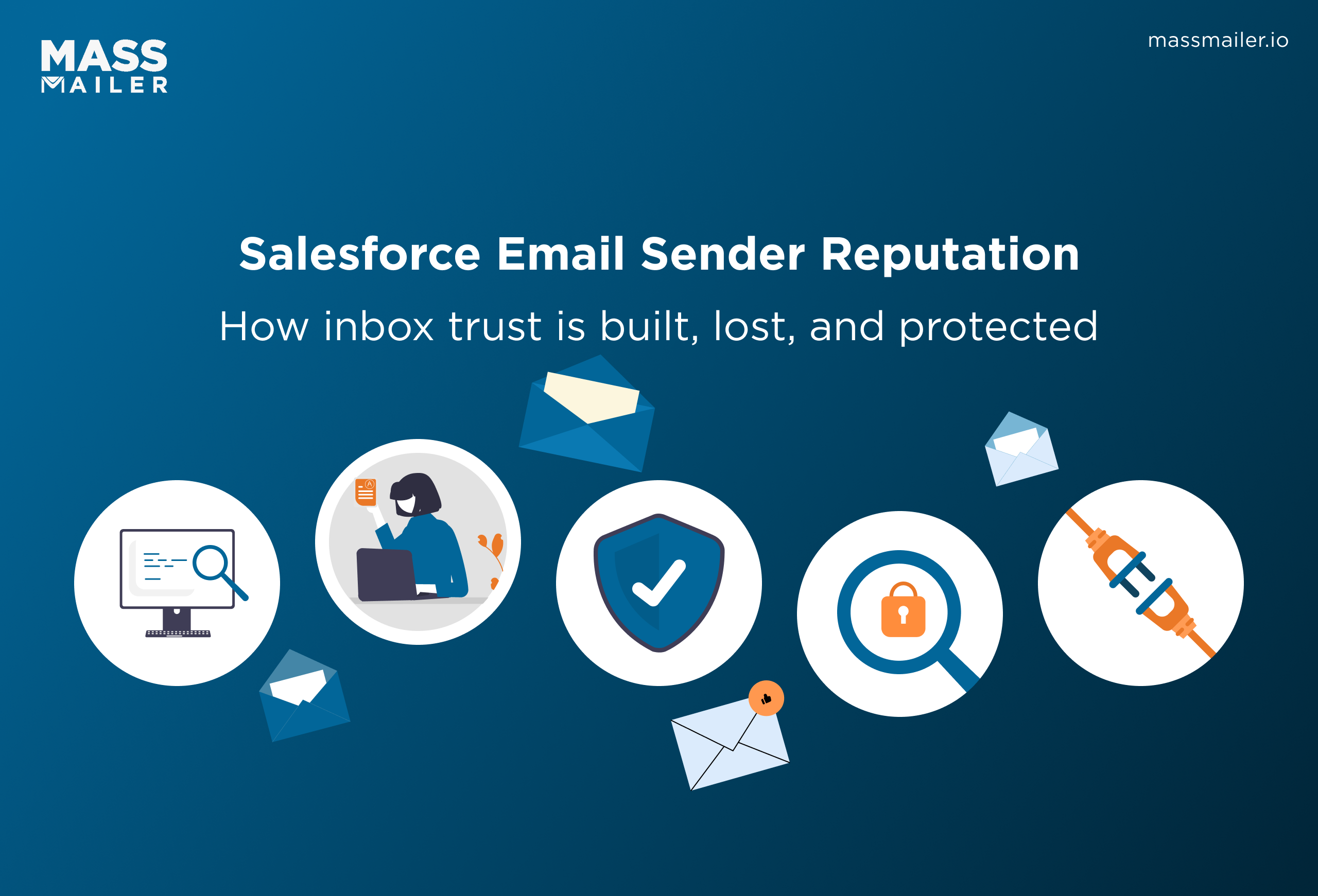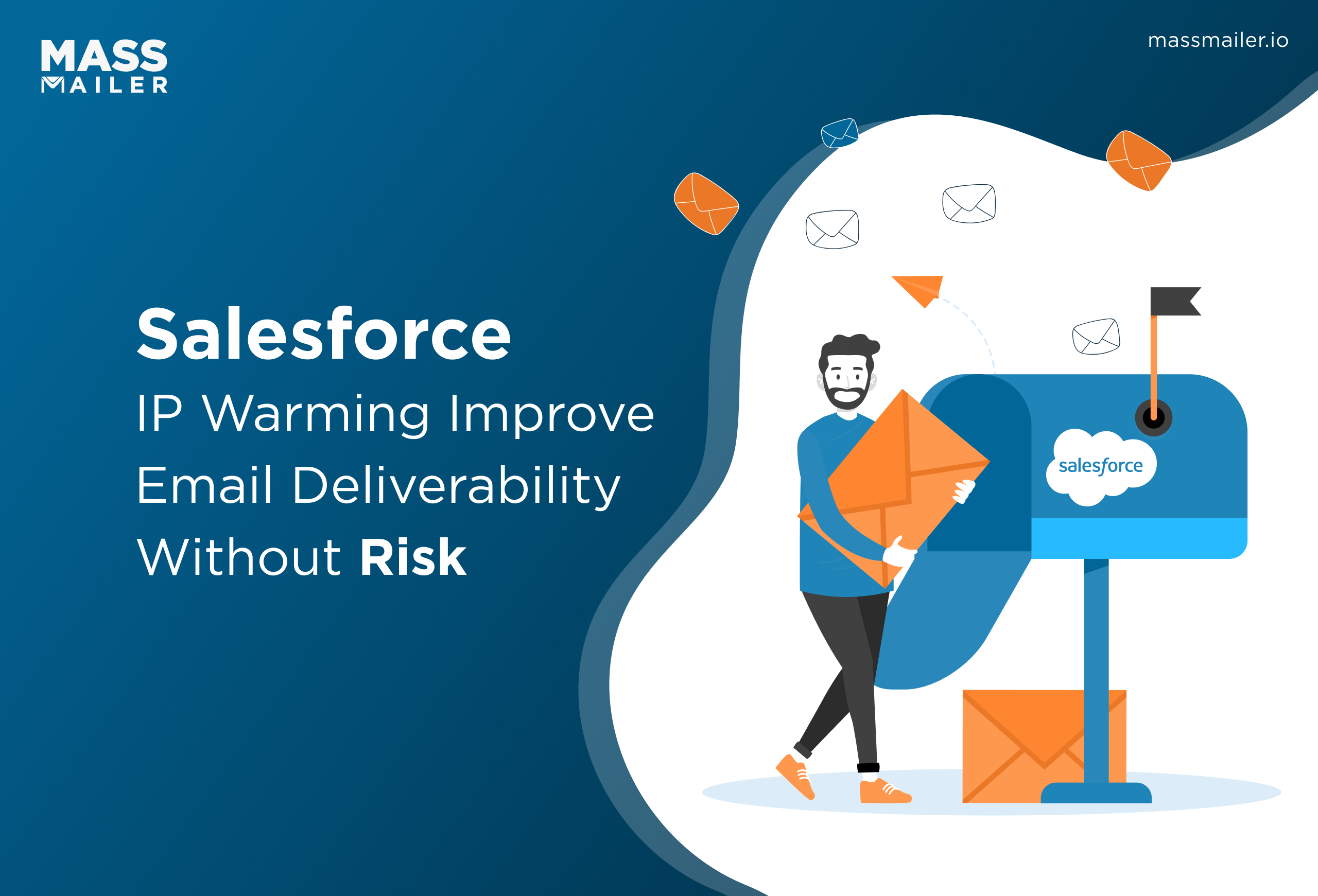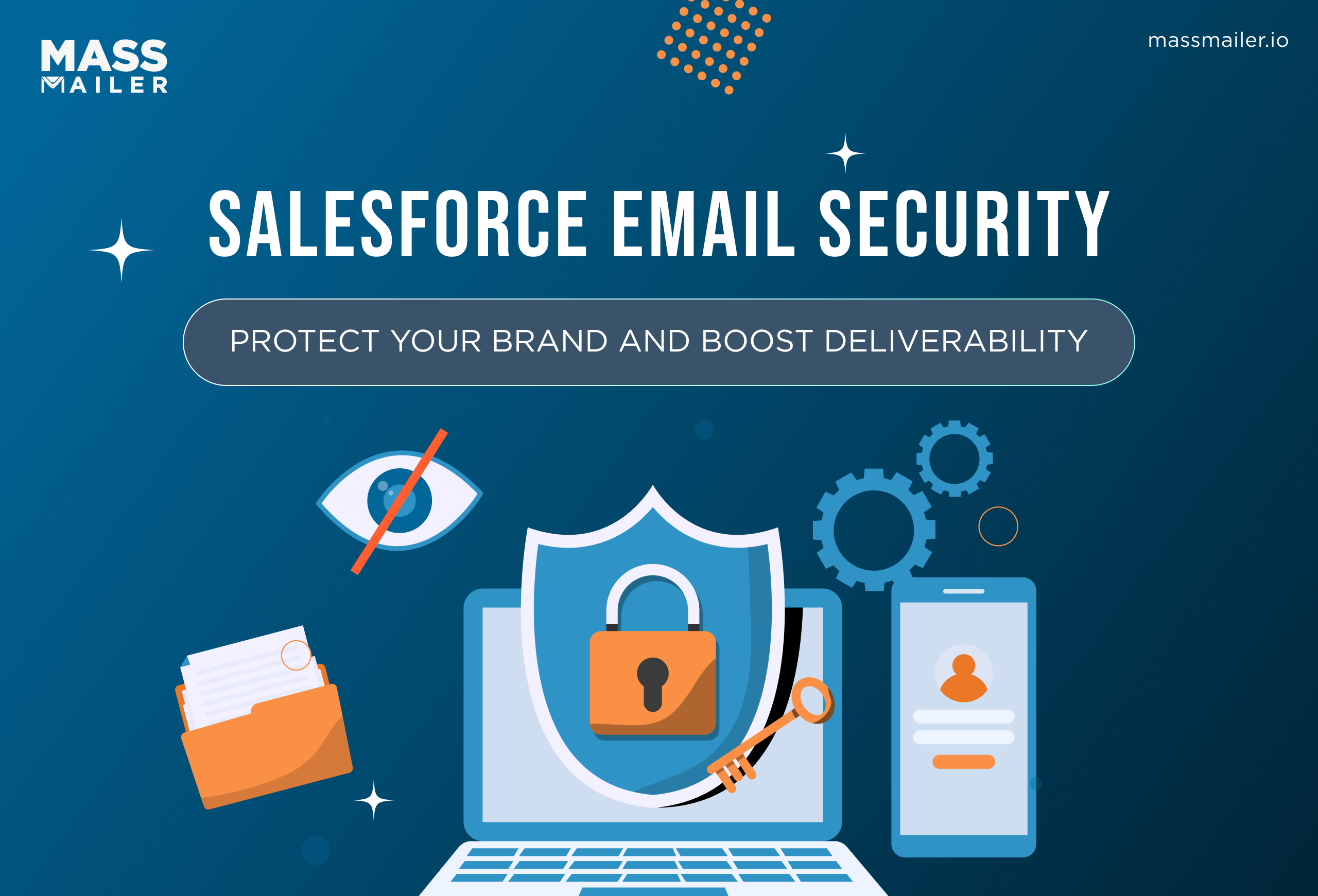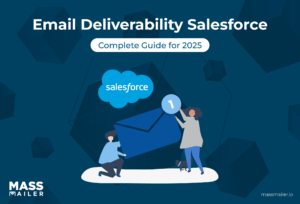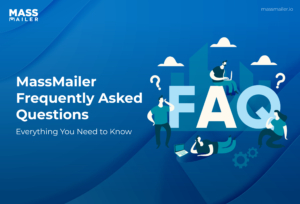Table of Contents
According to a report, over 20 percent of emails we send never reach the inbox. Instead, they end up in the spam folder or get lost altogether. That means, every one in five emails that you send never makes it to the recipient’s inbox. All of this combined can significantly affect your email campaign performances in the long run.

Considering the number of hours you spend drafting great email copy, designing email templates, and coming up with engaging email subject lines, shouldn’t you at least ensure that all your subscribers get the opportunity to read the sent emails?
Let’s take a look at the top email marketing and deliverability tips to boost your inbox reach:
1. Build your IP credibility and reputation
Spam has existed for almost as long as email has, and it has been growing at a tremendous rate. Today, nearly 85 percent of all emails are spam. As a result, email service providers have taken stringent measures to filter emails and ensure anything that resembles spam goes straight to the spam folder.
Email service providers assess the IP of the incoming emails to determine how trustworthy they are. In case your IP seems suspicious, there is a good chance, your email won't reach the inbox of the recipients.
That is why you need to steadily build IP credibility. If you have a new IP, start by sending out small batches of emails to people who you know are more likely to engage with the emails. After that, you can gradually increase the email volume. It's also a good idea to monitor your IP reputation regularly.
2. Track email performance stats
Pay attention to the delivery reports you get from your email service provider to identify any potential deliverability issues with your email campaigns. While open and click rates are important from a marketing perspective, you also need to focus on bounces and complaints about optimum email deliverability.
A high bounce rate or too many complaints by recipients can easily affect your sender's reputation. In most cases, high bounce rates can mean you are working with outdated subscriber information and you need to purge your subscriber list immediately. Too many spam complaints could also mean the recipients aren’t happy with the quality of content or the frequency of emails.
3. Allow subscribers to manage preferences
You need to make it as easy as possible for people to unsubscribe from your emails.
Yes, we know you are trying to retain your subscriber list and you wouldn’t want people to unsubscribe at all. But hear us out here -- If a person just isn’t interested in your emails anymore, wouldn’t it be better for them to unsubscribe instead of marking your emails as spam which could affect your sender reputation and deliverability?
Over 43 percent of people end up marking emails as spam all because they can’t find the unsubscribe button easily. Therefore it's necessary that you allow subscribers to manage their preferences and make unsubscribing as easy as possible.
You should include a link to unsubscribe at the bottom of all the emails you send out. It's also a good idea to add a ‘Manage Preferences’ link in your emails which subscribers can use to change their email address and the frequency of the emails they receive.
4. Monitor domain for blacklists
IP addresses get blacklisted when they receive a large number of spam complaints in a short span of time. You don’t even have to be sending spam content to get blacklisted. If you are using an email service provider with a shared server, then your email deliverability can get affected if someone else on the shared server has been flagged as spam.
It's way easier to avoid getting on a blacklist than it is to get out of one. If you are already on a blacklist, you should stop all your campaigns and focus on getting off of them. Sending emails from an already blacklisted domain will only make things worse.
To avoid getting blacklisted, keep your subscriber list in check, adopt good email sending habits, and consider getting a dedicated email server instead of a shared one. You should also use separate domains and IP addresses for prospecting emails.
5. Go for non-spammy subject lines
No matter how engaging your email content is, it is the subject lines that determine whether a person will open your email or not. As email service providers come up with more and more sophisticated algorithms to filter out spam, it's important to avoid spam phrases in general that can lead your emails directly to the spam folder, or worse, get you blacklisted.
Some of the many phrases that can be marked as spam include:
- Quick money
- Eliminate debt
- Free !!!
- Limited time offer
While there is no single list that you can use as a reference, it is a good idea to write subjects that offer genuine value to your subscribers without sounding too sale-sy or pushy.
6. Personalize your emails
Adding the recipient’s name at the start of the emails can increase your open rates. You can further personalize your emails by adding accurate sender information too -- which can be your brand’s name or yours. Ideally, you should add a name in the sender field to create a sense of familiarity and remind subscribers that there is a person behind the email who is trying to reach out to them. You can also add the sender name as ‘[Your Name] from [Company Name]’ to increase brand recognition.
But whichever way you choose to go, make sure to stay consistent with the sender name. Don’t flip flop and keep changing the sender name as it can make things confusing for your recipients. Consistent sender names allow recipients to instantly recognize who the emails are from which will, in turn, lower the chances of your emails getting marked as spam.
7. Review your email content before sending it through
Before you hit the ‘send’ button, make sure to review your email content thoroughly to ensure there aren’t any issues and your recipients are able to view the email properly.
Here are some tips that you should keep in mind:
- Send your email both in text and HTML format
- Preview emails on various devices
- Allow people to view your email in a web browser
- Include ALT text for all the images in your email
- Avoid using red font and large images in your emails
- Don't use flash or Javascript in the email content
- Review all the links in your email and ensure they lead to the correct destination
8. Stick to a consistent schedule
It's necessary to have at least some level of consistency in your campaign timings because an erratic schedule can quickly send your emails to spam. Bombarding your subscribers with too frequent emails can easily annoy them. On the other hand, sending emails too infrequently can lead to decreased brand awareness.
The idea is to create a consistent email schedule that allows you to share fresh and interesting content with your subscribers without overdoing it or going completely MIA for a long time. The right schedule will be different for everyone, which is why it's best to experiment with different sending intervals and frequencies to find the one that works for you.
9. Clean up your subscriber list regularly
There is a definite connection between email engagement and deliverability. The more people open your emails and engage with them, the higher reputation and trust you will have. But keeping inactive and unengaged users in your email list can end up damaging your deliverability rates as well as reputation. It is not just important to know to who you should be sending emails, but it's just as important to know to who you shouldn’t be sending emails.
Not sending emails to inactive subscribers that aren’t engaging with your emails is another way to boost email deliverability. That is why you should clean up your subscriber list regularly and create a dedicated suppression list of subscribers to who you do not wish to send any future emails.
Of course, the question here is -- how long should you wait until you move someone from your subscriber list to your suppression list?
It all depends on your sending frequency. The higher your email sending frequency, the shorter the period of time for adding someone to the suppression list.
10. Conduct routine email deliverability audit
Following the best practices to improve deliverability can work to a great extent, but not when your email deliverability has already taken a hit. If you have been noticing a consistent decline in your open rate and bounce rate, even when you have been doing everything right, it may be time to conduct a deliverability audit to check for any underlying issues. In fact, it is recommended to conduct routine audits every 4-5 months to ensure you can identify issues before they cause any severe consequences.
Let MassMailer do all the work for you
MassMailer can help you conduct regular email deliverability audits and subsequently improve email campaign performance. The email deliverability audit report includes all the major factors like:
- Email infrastructure for SPF, DKIM, DMARC, and BIMI
- Domain and IP reputation
- Recipient list validation
- Inboxing placement rate
- Historical reports analysis for bounces, blocks, opens, clicks, unsubscribes, and spam reports
- Custom domain tracking
- IP warm-up
Start Your Free Trial Today
Experience MassMailer the easiest way to send personalized emails from Salesforce.
Related Blogs
MassMailer Resources
MassMailer Glossary



